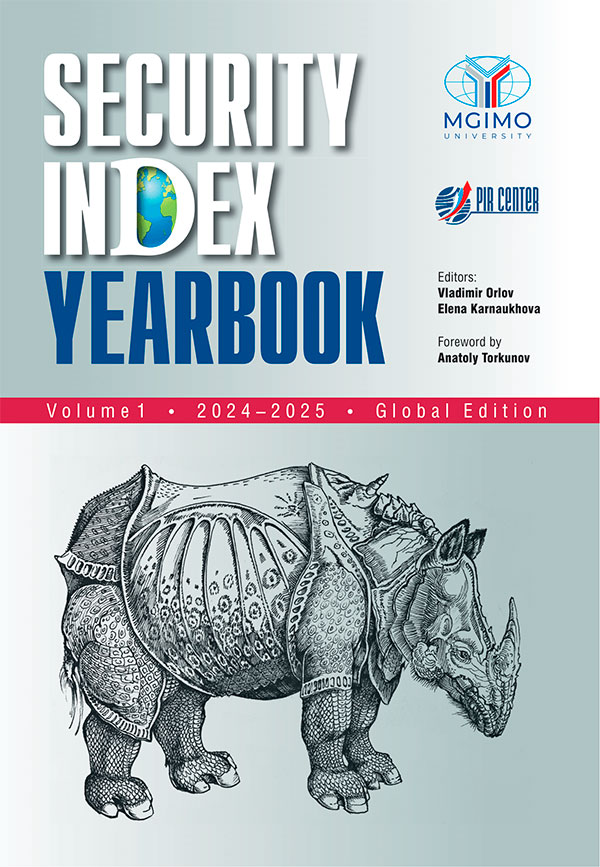... as a preferred transit corridor from the Asia-Pacific using Russia as the main link in this transit. This is why the odds are that in the nearest future NSR will be used mostly to serve Russia’s domestic cabotage needs as well as to ship Siberian oil, coal and LNG to China, India and other consumers in Asia. With due commitment, the annual size, which now amounts to almost 40 mln tons, can be doubled by 2030 and later on it can reach even 150 mln tons a year, but it will hardly ever successfully compete with ...
... export-oriented manufacturers, who form the backbone of Japan’s economy, began to crank up exports to receive more U.S. dollars. Japan’s Prime Minister Fumio Kishida mandated additional steps to balance the situation. These included not only resuming Russian oil exports but also re-signing contracts to buy LNG from
Sakhalinskaya Energia
, the new operator of Sakhalin-2 established pursuant to the Order of August 2022 issued by Mikhail Mishustin, the Prime Minister of the Russian Federation.
Vladimir Likhachev:
Both… But Can We Do Without the Emotions,...
...
3
. Rosneft President and Chairman of the Management Board Address to The World Energy Congress
http://www.rosneft.com/attach/0/02/01/pdf16102013.pdf
4
. Vladivostok-LNG project
http://www.gazprom.com/about/production/projects/deposits/vladivostok-lng
5
. After The Gold Rush: A Perspective on Future U.S. NaturalGasSupplyandPrice
http://www.theoildrum.com/node/8914
6
. Fracking: a serious concern for surface water as well as ground water
http://ec.europa.eu/environment/integration/research/newsalert/pdf/275na3.pdf
7
. Unconventional Gas Technical Engagement Program (UGTEP)
http://www.state....
... competition in the near future from Russia is set to rise further following the anticipated increase in shipments via the Northern Sea Route. To cite some top figures we expect to see 15 million tons of transit cargo pass here, 10 million tons of crude oil pass from Noviy Port and 15 million tons of LNG pass from Yamal LNG facility, where construction of a new Port Sabetta is in full swing.
As Vasiliy Bogoyavlenskiy from RAS outlined, Russia is in a good position in the Arctic as it extracts 3.5 times more than all other nations combined and is ...
... risks from piracy, terrorism and alike. To offer some headline numbers it is interesting to highlight that 36.9% of all global ships are oil tankers, which is just in front of normal dry bulk carriers (36%). Insofar as Malacca, in 2006 a total of 22,995 oil tanker journeys were recorded via the strait, which is only second to 29,672 container vessels, as we know Asia is a leading producer of low-cost consumer goods. Also, in the last decade the world has recorded an upsurge of LNG tankers with Indonesia, Malaysia, Qatar and Australia shipping liquefied gas via Malacca to Japan and Korea. In all, most ship types are growing in demand with Khalid (2009) even underlining that by 2020 Malacca will see traffic of 100,000+ ships ...
... according to various estimates become a net exporter of gas by 2020. Major advantage of American LNG projects is the relatively low level of capital expenditures due to significant number of existing LNG import facilities that can be quickly converted for LNG exports (albeit LUKoil does not underline the huge cost). A lot will depend on the US political climate as its current weak economic footing gives a lot momentum for those that believe exporting gas will damage the domestic economy via high prices. Interestingly, USA’s ...
... Peninsula and even as far as India. Then it was mainly Gazprom’s modest LNG expertise that limited sizeable deliveries in the near future to the heavily LNG focused Asian states. But still, Gazprom made good progress by shifting 9% of Japanese LNG and 7% of its oil in 2011 to Asia. Vladivostok LNG terminal, due for launch in 2017, will increase capacity matching the rising demand, particularly as recent events have benefited Russia (e.g. Fukushima Disaster). However, the talk about North Korea becoming a "transit ...
... a small portion of its overall energy mix, its growth has been very rapid. China has single-handedly fuelled more demand for LNG and expanded not only in its domestic, but also in international markets, like Africa (See: NYT). I was personally excited ... ... opportunities between Russia and China, as Energy Minister Alexander Novak, issued a statement that both were working on gas and oil deals prior to Xi's arrival (See: Prime). I even hoped to discuss these issues with Novak personally, at "The ...
... billion cubic meters. Currently, 16 US states have shale operations. As a result, US natural gas imports fell by 45% whereas LNG import decline by 19% since shale inception. Impressively, by 2015 the overall energy figure should increase to 43% and by ... ... billion profit and hires 7,600 staff. One guesses The New Times has made a big omission here, as it is not possible to start an oil or gas company on that sum due to an each individual well costing around $3 million to bore, depending on depth, geology and ...
... between its imports and exports. USA even had to convert its now useless LNG terminals (which it first built at a massive cost to assure gas supplies in early 2000’s) into shale gas export stations; albeit their potential is limited due to original LNG terminals being inflexible. Reason behind the original revolution was the high prices for oil and gas in 2007-2008, which is incredible as in a way the conventional energy lobby, somewhat, shot themselves in the foot. Currently, oil shale in its 2 years of mining is not as impressive as shale gas, but the latter had 5 years to get there. In ...



